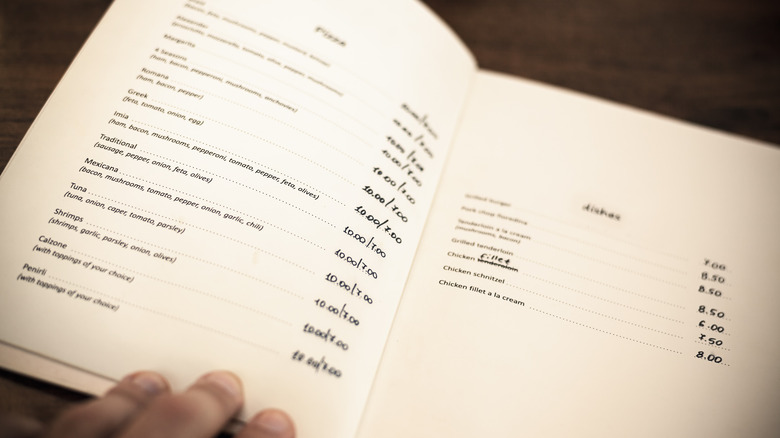How Restaurants May Be Tricking You Into Ordering Expensive Items
Anyone who's ever seen an episode of "Restaurant: Impossible" is well aware of the delicate balancing act restaurateurs have to navigate to calculate the cost of food, service, and the myriad expenses that contribute to the overhead of running a restaurant. Then, they have to figure out how to actually make money on top of that. For many, the solution comes in the form of using economical ingredients to create mouth-watering dishes, but there's more to that equation.
The Guardian explains that, historically, the strengths and weaknesses of restaurant menus reveal themselves over time, with each item dropping into one of four categories: stars (items that cost a lot to make and are so popular that patrons are willing to pay a premium), puzzles (lucrative dishes that, for some reason, don't sell well), ploughhorses (popular items that don't make money) and, finally, dogs (offerings that are both unpopular and unprofitable). In a perfect world, every dish would be a star. Every restaurant patron would delight in their meal and happily hand over bundles of cash, and every restaurateur would live a less stressful, more financially secure happily-ever-after.
But it's not a perfect world. That's where restaurant consulting and menu engineering come into the picture.
Decoding a restaurant menu
Menu engineering is a lot like subliminal persuasion. According to The Guardian, basic elements include things like a "price anchor," an eye-catching display of the most expensive on the menu, showcased to establish patrons' expectations. In contrast, other items appear inexpensive. "Bonus boxes" are strategically placed to draw attention to items that may normally be considered indulgent, but will appear less so when compared to the price anchor.
"Bracketing" is the practice of offering two portion sizes of the same item. Patrons usually choose the lesser-priced, smaller, portion — which is more profitable for the restaurant. And it turns out columns — a linear design listing items in one column and the cost in an adjacent column — are a bad idea. That layout makes it too easy to price compare.
Restaurant software company Plum describes menu engineering as a combination of psychology and marketing. It's not a new concept. The strategy stems from the Growth Share Matrix, a tool developed by Boston Consulting Group in the 1970s to help companies prioritize high-value items.
A Gallup poll cited by Plum suggests restaurant patrons spend less than two minutes perusing a menu. That's all the time a restaurateur has to steer customers to high-yield selections. Next time you're in a restaurant, take a closer look at the menu; you may notice a subtle design road map steering you to the most expensive offerings.

